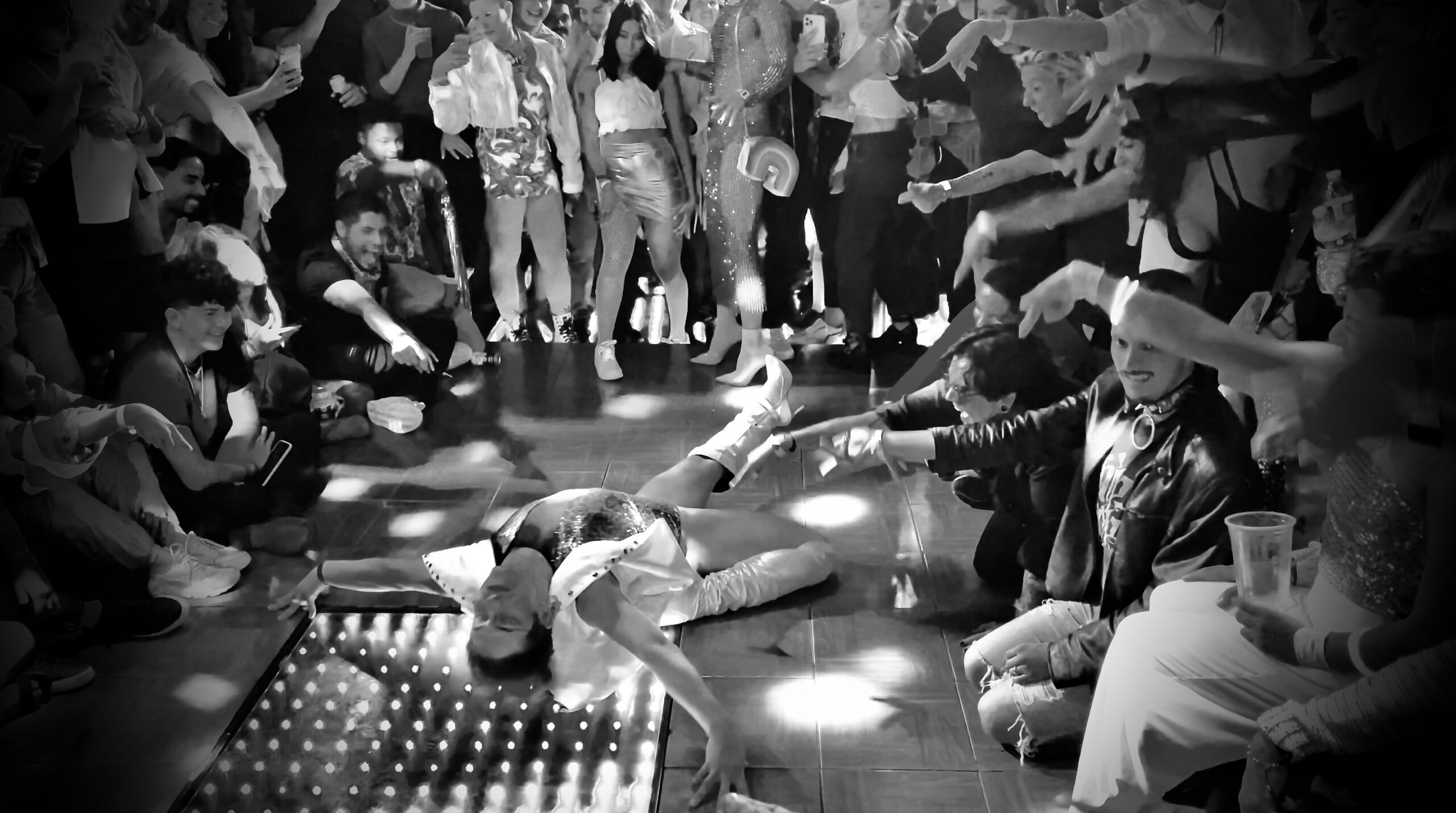
Get to know

This limited series educates & inspires the ballroom spirit within all of us. Don’t just learn how to vogue – walk the catwalk by journeying through queer history alongside ballroom leaders, legends, and activists. Travel through Latin America, one ball at a time.
We’re here – we’re queer – get used to it.
It’s never been a better time to be queer – but persecution and travails against the queer community remain. Being queer means finding family in community, and there’s never been a better community than ballroom.
The ballroom scene is growing and has crossed the border into Latin America. Currently, over 100 kiki (youth) houses and around 40 mainstream houses are in the U.S., while Mexico, Brazil, Chile, Colombia, Costa Rica, and Panama host about 50 kiki and 25 mainstream houses.
Ballroom has been in mainstream cultural conversations for over 30 years; the documentary film Paris is Burning made over $4 million during its 1991 debut.
More recently, FX and a mega-profile showrunner greenlit Pose, a narrative TV series based in the NYC ballroom culture. Pose received extensive critical & viewer acclaim and saw live viewership figures of over 600,000 for season premieres & over 500,000 throughout its three seasons.
Riding the sequined coattails of Pose, HBO Max developed a competition show based around ballroom performance. Boasting a Certified Fresh score on Rotten Tomatoes, “ballroom extravaganza for die-hards and newcomers” Legendary draws critics & viewer acclaim alike. Legendary has a 1.9% higher demand rate from its audience than other shows in the reality TV genre.
Recent estimates suggest at least 27 million queer people reside in Brazil, 20 million in Mexico, and 6 million in Colombia. According to recent surveys, in the USA & Europe around 10% of the population identifies as queer.
The LGBTQ+ community’s collective purchasing power was valued at $3.7 trillion worldwide in 2019 and is steadily growing.
The rich history of ballroom culture began in the 1920s, when African-American fraternal societies held racially integrated “Fairies’ Balls” in venues like the Hamilton Lodge. Participants in drag competed on the quality of their costumes and performances.
Marcel Christian LaBeija threw the first ball specifically for black queens in 1962 to combat racism present at the events. Lottie LaBeija and House Mother Crystal LaBeija created the house system in the 1970s. Junior and Tommie LaBeija can still be seen attending and speaking at balls across America today.
Ballroom pioneer Paris Dupree threw her first annual ball with categories such as “Executive Realness” in New York in 1981. Ballroom culture became as much socio political conversation as pageant. Vogue dance was created and refined by African-American and Latinx dancers, particularly Willi Ninja, the Grandfather of Vogue. By 1986, Dupree’s annual ball became the namesake for legendary documentary Paris is Burning.

Paris is Burning and Madonna’s hit single “Vogue” made some parts of ballroom culture a mainstream fad in 1990. Some persons featured in Paris is Burning felt undercompensated and blamed the film for how short-lived mainstream response was. After the hype, ballroom culture continued to thrive in the queer underground of major cities like New York, Philadelphia, Washington D.C., and Baltimore.
The creation of kiki houses provided surrogate families for queer youth to participate in age-appropriate “kiki balls”. The kiki scene also provided training for youth aspiring to walk the balls.
Early ballroom houses named themselves after the fashion houses of Europe, while kiki houses often took the names of streetwear fashion brands like Old Navy and Juicy Couture.
The kiki scene came to celebrate its own history of legends, statements, and stars. Several entertainment success stories speak fondly of their kiki origins. Kiki House of Juicy, Mother Courtney Juicy has housed many successes, like Rihanna choreographer Alex Miyake-Mugler. TV series Pose producers Jonovia Chase, Twiggy Pucci Garcon, and Legendary contestants Omari Oricci and Kalik Balenciaga are still seen regularly at kiki events across the U.S.
RuPaul’s Drag Race premiered in 2009, bringing drag culture back into the mainstream along with catty banter like “reading” and “shade”. In 2016, the Swedish-American documentary Kiki provided an updated look at the kiki scene’s trajectory from word-of-mouth microcommunity to an influential entity as large as mainstream ballroom.

New interest led to FX’s 2018 TV series Pose, which revisits the history of ballroom culture, and Vice’s My House, which explores today’s balls.
Legendary on HBO Max brings ballroom to its biggest audience yet, with a grand prize totalling a $100,000 dollars. Debate over whether the show is healthy for the community rages on.
Some revel in the sight of icons Amazon Leiomy, Dashaun Wesley, and Arturo Mugler gliding across the screen in Legendary, while others think the show’s glitz, endorsements, and money sully the vision of Crystal LaBeija and other queens who created ballroom.
One thing’s for certain: after providing the unseen backbone of the film, fashion, and music industries for decades, the ballroom community is finally out of the shadows and front-and-center.
